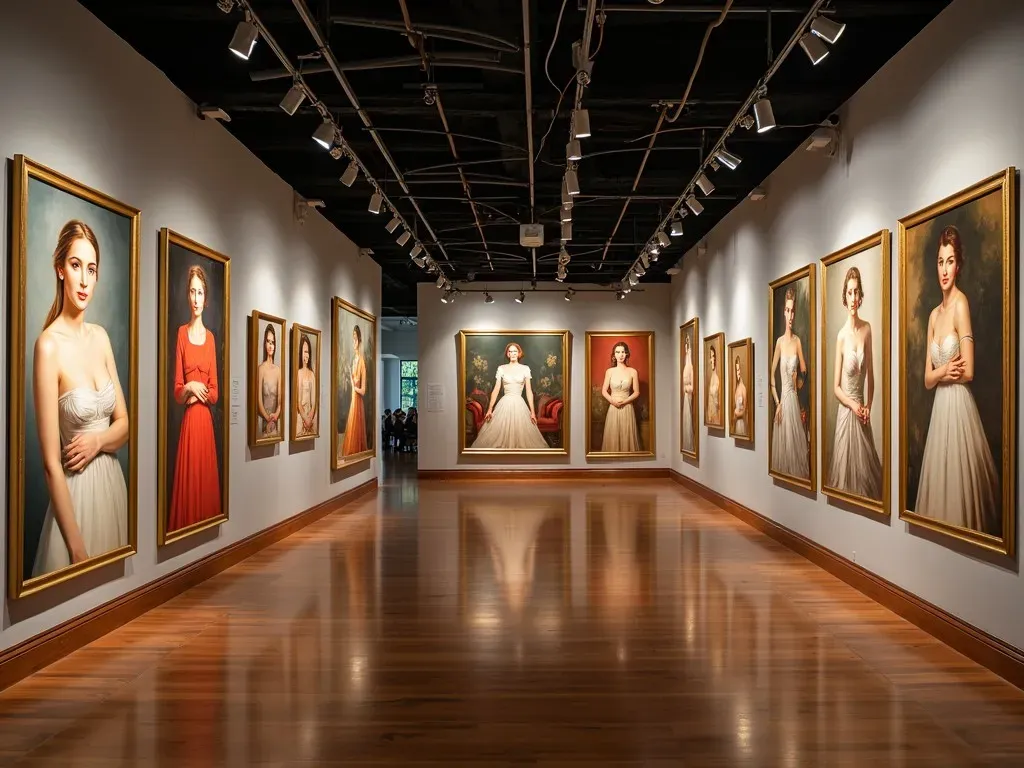Beautiful Woman Art refers to the artistic representations that celebrate the grace, elegance, and allure of women. This genre encompasses a wide range of styles, mediums, and time periods, showcasing how artists from various cultures and backgrounds have portrayed female beauty throughout history.
The Importance of Women in Art
The representation of women in art is not just a reflection of beauty; it also often signifies deeper themes such as empowerment, identity, and societal roles. Here’s a look at the historical and cultural significance of women in art:
- Historical Representation: Women have been depicted since prehistoric times, but their portrayal often reflected the cultural attitudes of the time. For instance, during the Renaissance, women were often idealized through mythological lens as goddesses or muses.
- Cultural Dimensions: Different cultures have diverse interpretations of feminine beauty. From the curvaceous figures in African art to the delicate portrayals in Asian art, these variations add rich layers to the understanding of femininity.
Facts and Figures about Women in Art
| Period | Examples of Artists | Key Themes |
|---|---|---|
| Renaissance | Leonardo Da Vinci, Botticelli | Beauty, divinity, mythology |
| Impressionism | Mary Cassatt, Berthe Morisot | Everyday life, intimacy |
| Modern Art | Frida Kahlo, Georgia O’Keeffe | Identity, personal struggle, empowerment |
These periods highlight how the depiction of women has evolved through art, from idealized representations to personal and dynamic portrayals.
Iconic Paintings of Beautiful Women
Throughout history, there have been several iconic paintings that have become synonymous with the concept of beautiful woman art. Here are some remarkable examples:
1. Birth of Venus (1485) by Sandro Botticelli
Arguably one of the most celebrated works in art history, “Birth of Venus” depicts the goddess Venus emerging from the sea. Her beauty is ethereal, representing divine femininity.
2. Mona Lisa (1506) by Leonardo Da Vinci
The enigmatic smile of the Mona Lisa continues to capture the imagination of millions. This painting reflects Renaissance ideals of beauty and grace, leaving viewers intrigued by her mysterious expression.
3. The Cup of Tea (1879) by Mary Cassatt
Mary Cassatt was known for her intimate portrayals of women and their interactions. “The Cup of Tea” captures a quiet moment of reflection, emphasizing the beauty of everyday life.
4. Girl With a Pearl Earring (1665) by Johannes Vermeer
This masterpiece depicts a young girl wearing an exotic turban and a pearl earring, inviting viewers to ponder her story. The soft lighting and subject’s gaze create a sense of intrigue.
5. Olympia (1856) by Édouard Manet
“Olympia” was groundbreaking for its direct gaze and portrayal of a reclining nude woman. It challenged traditional depictions of women in art and sparked debates on sexuality and power.
Reference Video
The Evolution of Beautiful Woman Art in Different Cultures
Western Art
In Western countries, beautiful woman art often emphasizes realism and idealism. Artists like Edgar Degas and Gustav Klimt focused on capturing the essence of femininity, often portraying women in domestic settings or as muses in nature.
Eastern Art
In Eastern cultures, particularly in Japan and India, female representations often intertwine spirituality with beauty. The traditional Japanese woodblock prints that showcase women in kimonos celebrate both cultural heritage and aesthetics.
Curating your Beautiful Woman Art Collection
If you are looking to enhance your art collection with beautiful woman art, consider the following tips:
- Explore Various Mediums: From paintings to digital art and photography, a variety of mediums can add diversity to your collection.
- Buy from Authentic Sources: Websites like Saatchi Art offer a rich selection of beautiful woman art from emerging artists.
- Support Local Artists: Attending art fairs and local galleries can help you discover unique pieces and support the art community in your area.
Popular Platforms for Beautiful Woman Art
| Platform | Description |
|---|---|
| Saatchi Art | A marketplace for original beautiful woman art |
| Fine Art America | Offers a wide range of art prints featuring beautiful women |
| Etsy | A platform for handmade and digital art, including beautiful woman art |
FAQs
What defines beautiful woman art?
Beautiful woman art is defined by its portrayal of femininity, grace, and beauty across various artistic styles and mediums.
Who are some famous artists known for their work on beautiful women?
Some Notable Artists include Leonardo da Vinci, Botticelli, Mary Cassatt, and Frida Kahlo.
How can someone incorporate beautiful woman art in their home?
Art can be incorporated through paintings, prints, digital art, or decor items that showcase women in a way that resonates with personal aesthetics.
Are there modern interpretations of beautiful woman art?
Yes, contemporary artists often explore themes such as gender identity and empowerment, allowing for diverse expressions in modern interpretations.
Where can I discover more beautiful woman art?
You can explore various online platforms like Etsy, Saatchi Art, and local galleries to discover new artworks.
By understanding the layers of meaning behind beautiful woman art, one gains a deeper appreciation for how these artistic expressions reflect societal attitudes and individual stories through time and space.
